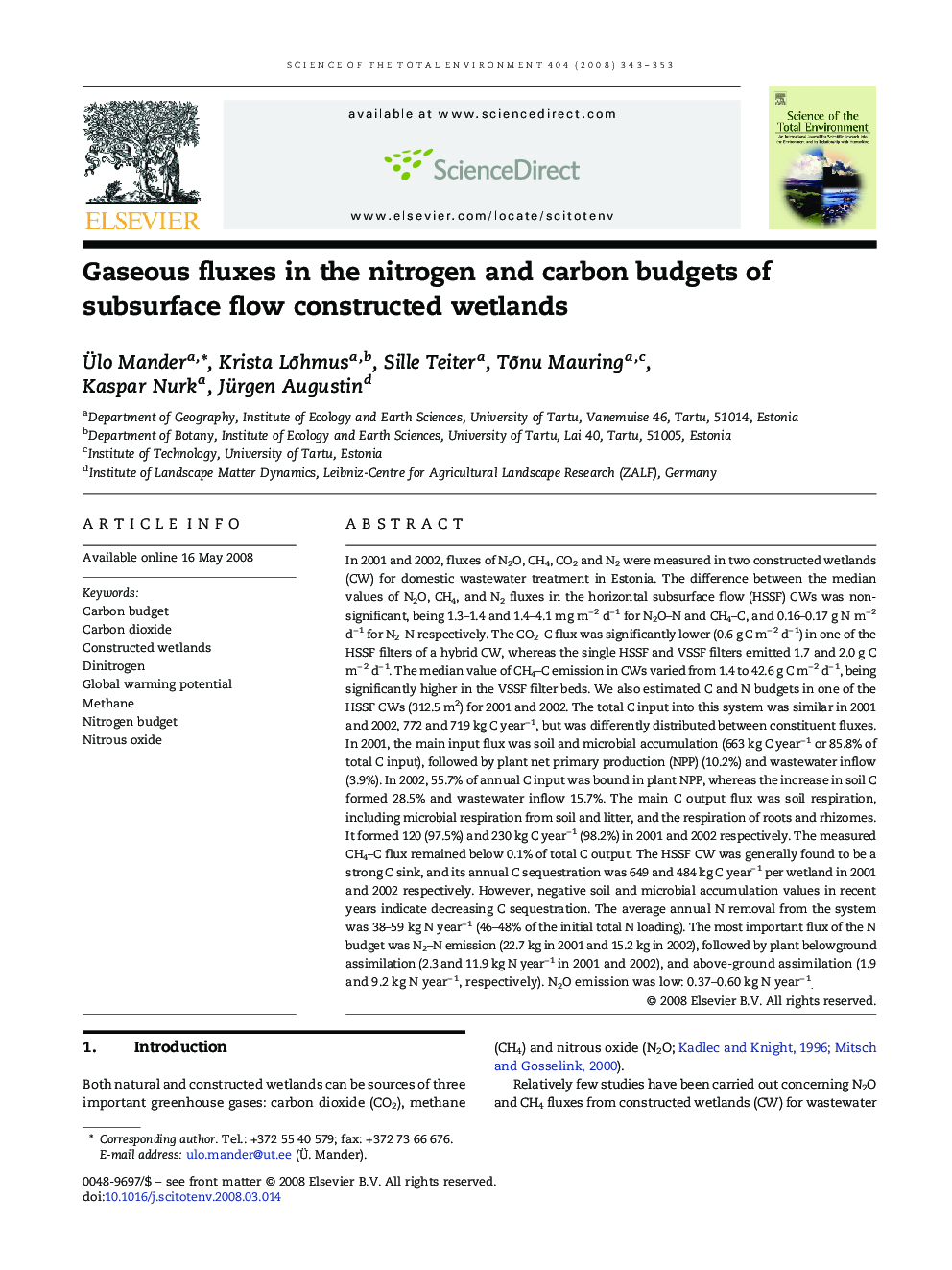| Article ID | Journal | Published Year | Pages | File Type |
|---|---|---|---|---|
| 4431298 | Science of The Total Environment | 2008 | 11 Pages |
In 2001 and 2002, fluxes of N2O, CH4, CO2 and N2 were measured in two constructed wetlands (CW) for domestic wastewater treatment in Estonia. The difference between the median values of N2O, CH4, and N2 fluxes in the horizontal subsurface flow (HSSF) CWs was non-significant, being 1.3–1.4 and 1.4–4.1 mg m− 2 d− 1 for N2O–N and CH4–C, and 0.16–0.17 g N m− 2 d− 1 for N2–N respectively. The CO2–C flux was significantly lower (0.6 g C m− 2 d− 1) in one of the HSSF filters of a hybrid CW, whereas the single HSSF and VSSF filters emitted 1.7 and 2.0 g C m− 2 d− 1. The median value of CH4–C emission in CWs varied from 1.4 to 42.6 g C m− 2 d− 1, being significantly higher in the VSSF filter beds. We also estimated C and N budgets in one of the HSSF CWs (312.5 m2) for 2001 and 2002. The total C input into this system was similar in 2001 and 2002, 772 and 719 kg C year− 1, but was differently distributed between constituent fluxes. In 2001, the main input flux was soil and microbial accumulation (663 kg C year− 1 or 85.8% of total C input), followed by plant net primary production (NPP) (10.2%) and wastewater inflow (3.9%). In 2002, 55.7% of annual C input was bound in plant NPP, whereas the increase in soil C formed 28.5% and wastewater inflow 15.7%. The main C output flux was soil respiration, including microbial respiration from soil and litter, and the respiration of roots and rhizomes. It formed 120 (97.5%) and 230 kg C year− 1 (98.2%) in 2001 and 2002 respectively. The measured CH4–C flux remained below 0.1% of total C output. The HSSF CW was generally found to be a strong C sink, and its annual C sequestration was 649 and 484 kg C year− 1 per wetland in 2001 and 2002 respectively. However, negative soil and microbial accumulation values in recent years indicate decreasing C sequestration. The average annual N removal from the system was 38–59 kg N year− 1 (46–48% of the initial total N loading). The most important flux of the N budget was N2–N emission (22.7 kg in 2001 and 15.2 kg in 2002), followed by plant belowground assimilation (2.3 and 11.9 kg N year− 1 in 2001 and 2002), and above-ground assimilation (1.9 and 9.2 kg N year− 1, respectively). N2O emission was low: 0.37–0.60 kg N year− 1.
